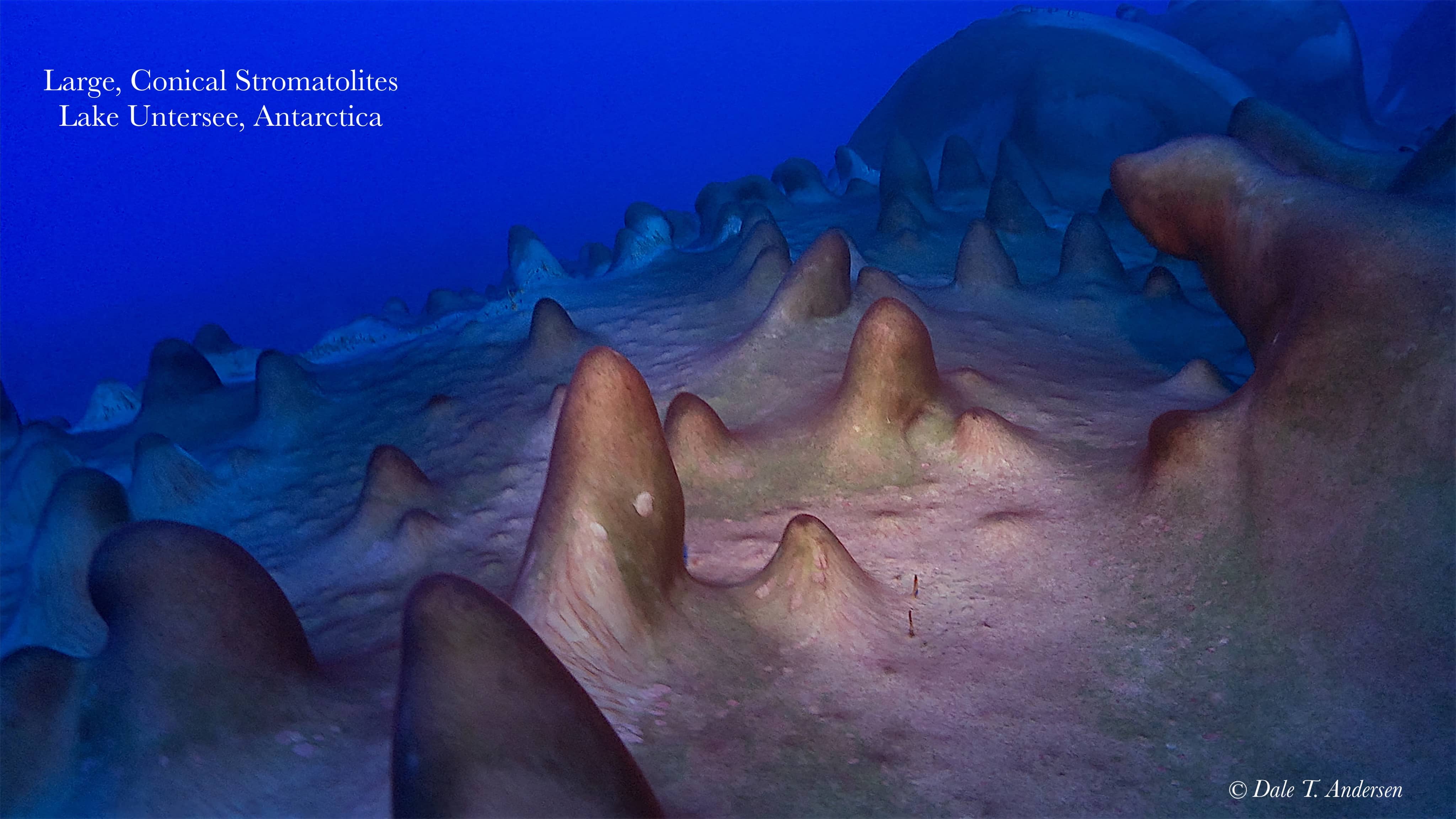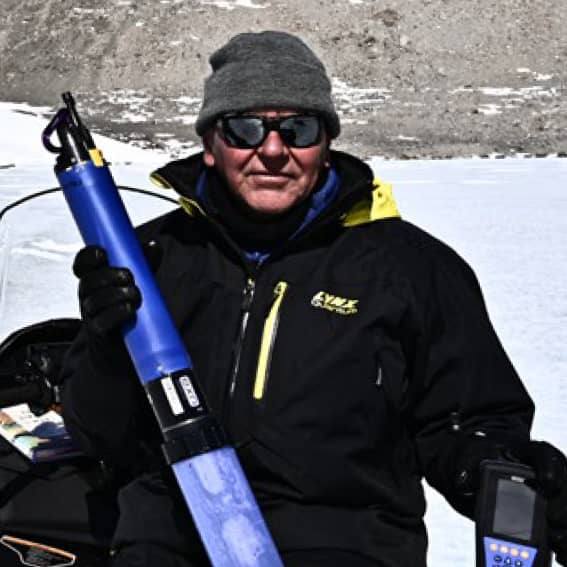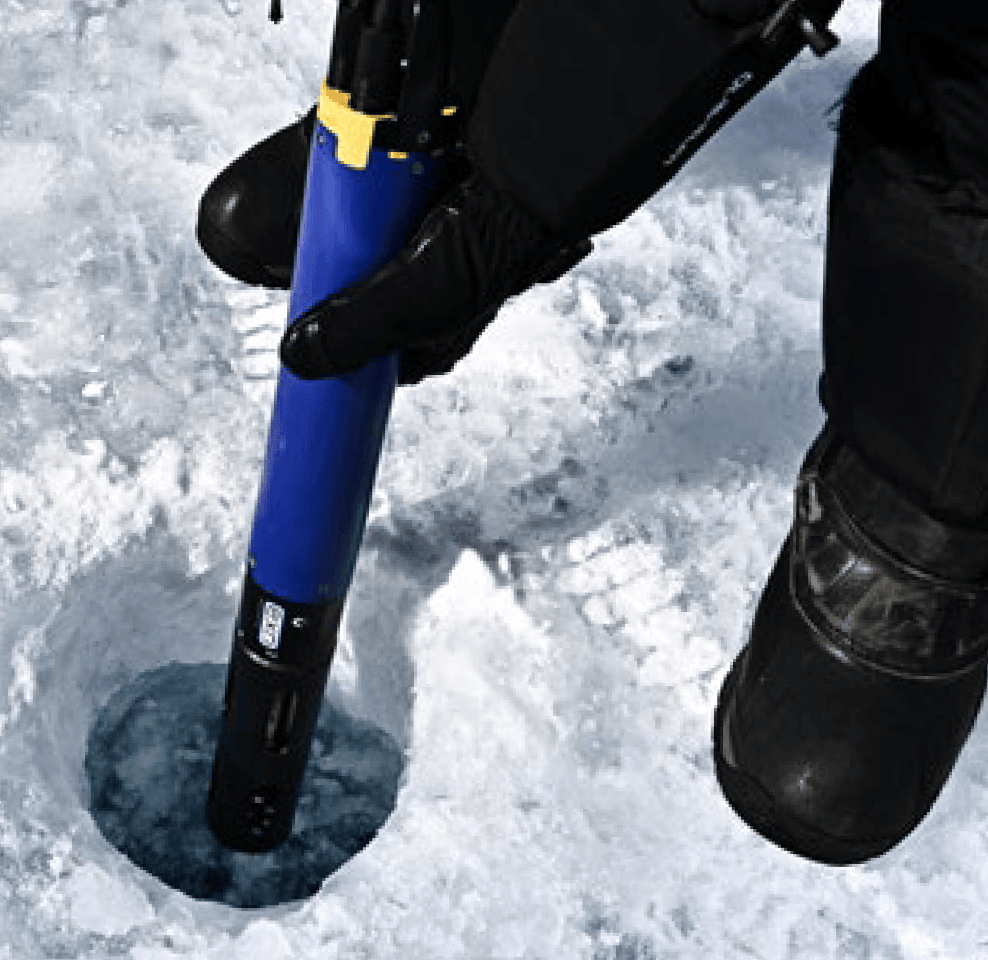Researchers use Xylem technology to explore origins of life on Earth
What can an Antarctic lake tell us about the origins of life on Earth, and how can it help guide our search for life on Mars? These are some of the questions researchers hope to answer using Xylem’s YSI Technology as they dive deep beneath the surface of Antarctica’s Lake Untersee. Join them on a journey three billion years into the past.
Slipping under three meters of ice into the cold water of Lake Untersee, Dale Andersen enters a world cut off from the rest of Antarctica. As he descends with his tether, he sees small, cone-shaped structures called stromatolites all along the lake’s bottom. These one-to-two-foot-high cones have formed over eons, layer by sub-millimeter layer, by a cyanobacterial genus called Phormidium.
Until Andersen and his colleagues discovered the stromatolites, they had never been found in a modern environment and were only a memory from when all earth’s occupants were microbes.

“This is like a postcard from 3 billion years ago,” Andersen says. “If you wanted to visualize what an ecosystem looked like during those times, these Antarctic lakes provide wonderful analogs of early microbial landscapes.”
A window to the past, and other planets
 Andersen is a senior research scientist at the Carl Sagan Center of the SETI Institute, a research organization dedicated to searching for and studying life and intelligence beyond Earth.
Andersen is a senior research scientist at the Carl Sagan Center of the SETI Institute, a research organization dedicated to searching for and studying life and intelligence beyond Earth.
Even though Andersen has been diving in Lake Untersee for more than a decade, he’s still in awe of the unique vision of its landscape of cones. In fact, he notes, “more people have walked on the surface of the moon than have seen, in-person, the bottom of this lake.”
“Understanding those early paleo-environments or early biospheres on our own planet is an important aspect of understanding how one goes about the search for life elsewhere,” Andersen says.
“For example, as we carry out investigations in these Antarctic analogs, we think they might provide a glimpse of early Mars. Perhaps microbial ecosystems once existed there as well – not exactly the same as seen in the Antarctic lakes, but similar nonetheless.”
“Working with the stromatolitic communities in the lake helps inform the search for evidence of life in paleo-lacustrine sediments on Mars. The anaerobic regions of the south basin of Untersee helps us focus on what it will take to search for life in the oceans of Enceladus and Europa, the outer moons of Jupiter and Saturn.”
Measuring water quality with YSI sondes
Located in the mountains of East Antarctica’s Queen Maud Land, Lake Untersee is covered in ice year-round. To reach Lake Untersee, a multi-disciplinary research team flies to Antarctica from Cape Town, South Africa, and lands on the ice runway at Russia’s Novolazarevskaya research station. From there, the team must traverse the ice over a day-long snowmobile ride.
 Then they set up camp and start drilling a hole through the ice. To make the hole, the team circulates warm water through a cylindrical coil that steadily melts through the ice to create access to the lake for diving – a process that can take more than 24 hours. Smaller 10-inch diameter holes are used for lowering instruments and obtaining water samples.
Then they set up camp and start drilling a hole through the ice. To make the hole, the team circulates warm water through a cylindrical coil that steadily melts through the ice to create access to the lake for diving – a process that can take more than 24 hours. Smaller 10-inch diameter holes are used for lowering instruments and obtaining water samples.
Andersen is fastidious about collecting water quality measurements throughout the water column. He uses a YSI EXO2 Multiparameter Sonde with smart sensors for turbidity, total algae, pH, oxidation-reduction potential (ORP), fluorescent dissolved organic matter (fDOM), dissolved oxygen (DO), and conductivity.
Slowly lowering the sonde – a meter or even a half-meter at a time – and keeping an eye on the software ensures the team can spot subtle shifts in temperatures, oxygen levels, and chemical composition.
Insights into global warming’s impact
Under the ice, Lake Untersee is generally a very calm environment, with extremely slow circulation of water across the lake. Andersen says a particle would take about a month to travel the lake’s 6.5-kilometer length. However, there is occasional drama.
Examining satellite altimetry data, Andersen and his colleagues noted a sudden two-meter rise in Lake Untersee’s water level in early 2019. It seems an ice dam had burst at Lake Obersee, about six kilometers away, releasing an estimated 17.5 million cubic meters of water into Lake Untersee over a three-week period.
Based on subsequent observations and measurements, Andersen says it was likely a 300-to-500-year event. Upon returning to Lake Untersee in November 2019, Andersen immediately deployed a multiparameter sonde to measure the lake’s water quality.
“We witnessed a major shift in water chemistry as a result of this flooding event,” Andersen notes. “These measurements are important and the kind that will help us understand the impacts that global warming will have on Untersee’s microbial ecosystem over the coming years.”
As Andersen describes the world he is exploring under the Antarctic ice, NASA’s Perseverance rover is streaming gigabytes of images from the surface of Mars. Though perseverance is 141.6 million miles from Lake Untersee, the two worlds meet as scientists pore over photos from both locations, eager to understand the origins of life on our planet and searching for hints of life on others.
See the video: Cold Warriors: Diving for Science in Antarctica
Read the full story and more
Download issue #9 of YSI’s free magazine, Mission: Water.
All photos ©Dale T. Andersen

